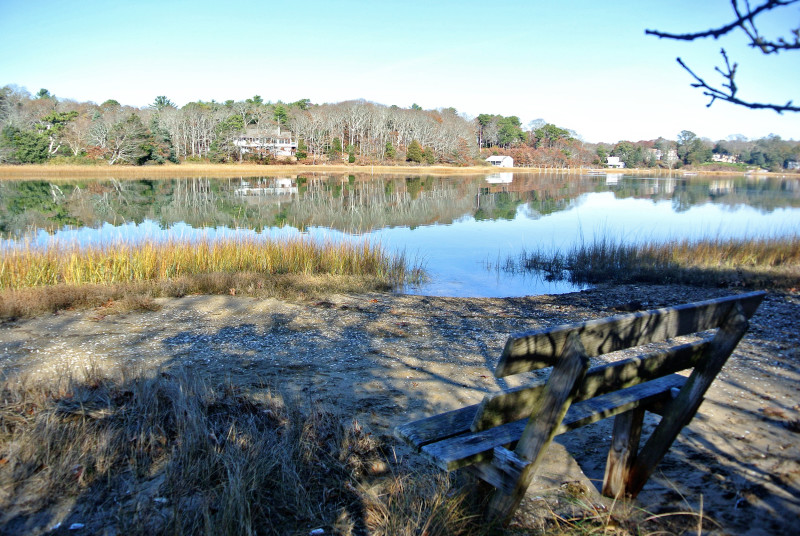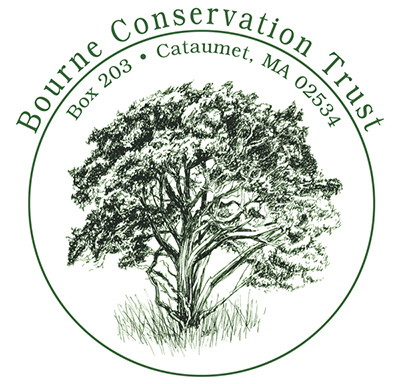Lawrence Island
Have you ever wanted to explore an island? You can do just that at Lawrence Island, a sandy spit that separates Squeteague and Megansett harbors in the Bourne village of Cataumet. The best part about this Bourne Conservation Trust wildlife sanctuary – other than the beautiful water views, of course – is that you don’t even need a boat to get here!
Features
Not all islands can be walked to. Luckily, Lawrence Island in Cataumet is connected to the mainland by a trail along a sandy stretch of salt marsh. Whether you come on foot or by kayak, put Lawrence Island at the top of your list for your next outdoor adventure.
Once on Lawrence Island, you’ll find a special piece of undeveloped Bay shoreline. The island separates sheltered Squeteague Harbor from the clear waters of Megansett Harbor. From these sandy, wooded shores, soak up spectacular views of boats, birds, and Buzzards Bay.

Take a seat by the shores of Squeteague Harbor and enjoy the view from Lawrence Island.
Trails
The trail to Lawrence Island begins at the end of Grasslands Lane. In total, this sand-covered trail runs for about a mile. You’ll easily complete it in 30 minutes – but we suggest you linger a little longer to explore. (Download trail map)
As you walk to the island along Squeteague Harbor, you’ll cross private property and pass several private homes; please respect their privacy by staying on the trail. If you have your dog with you, keep your furry friend leashed until you reach the island (and always pick up after them). One word of advice: Wear shoes that can get wet and muddy, especially if you come at high tide!
After you cross a few board bridges through the marsh, you’ll arrive at Lawrence Island. The trail circles around the island, providing beautiful views of Squeteague Harbor, Megansett Harbor, and Buzzards Bay.
Habitats & Wildlife
Lawrence Island is a wildlife sanctuary where many creatures live, from fox and mink to ospreys and seabirds. Up in the trees, hawks may be scanning for smaller prey like songbirds, mice, and voles on the ground. Along the island’s shores, keep an eye out for crabs darting among the marsh grasses – at low tide, you may even see hundreds of them moving together in sync.

 Download Property Map
Download Property Map